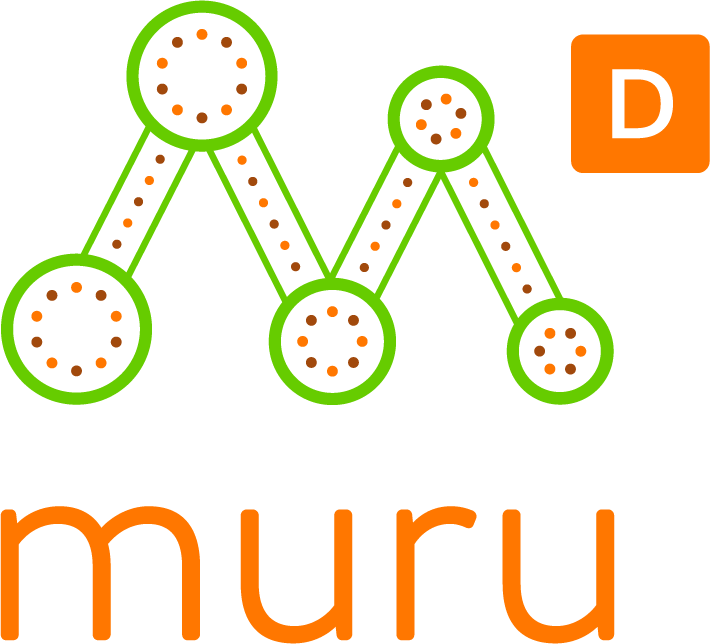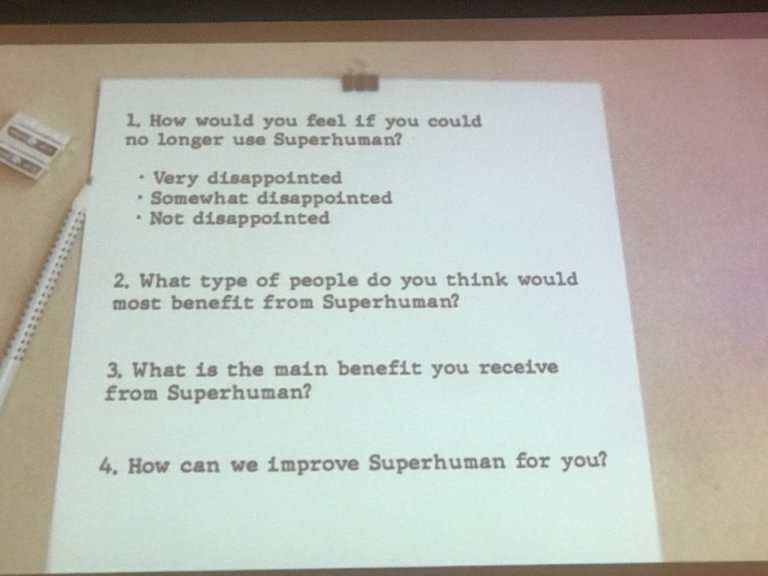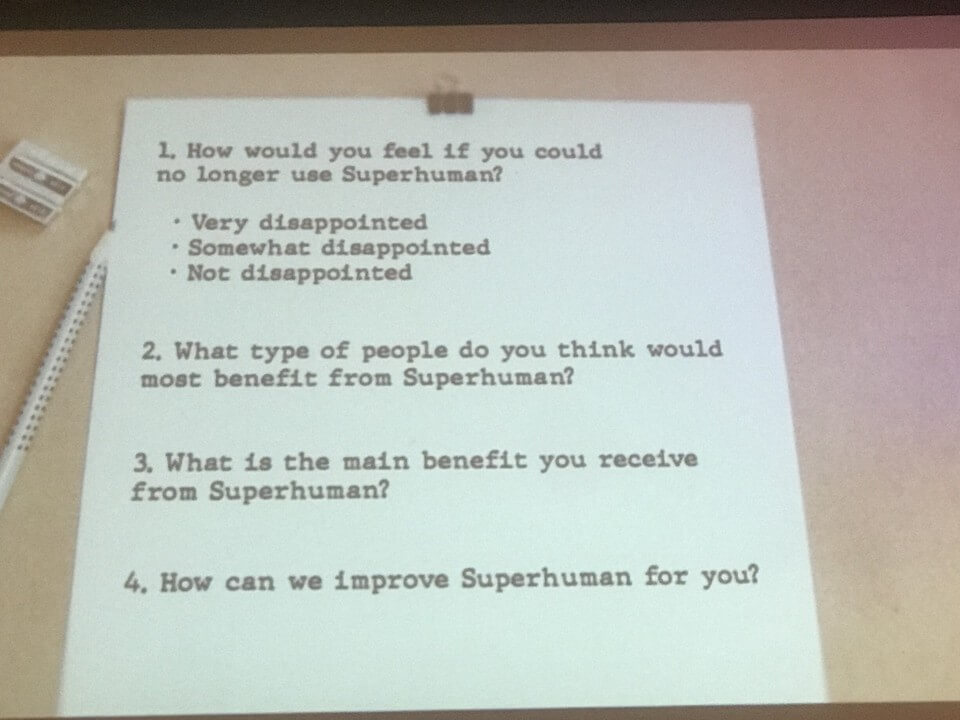What We Learned From Superhuman
By Kristi Mansfield & Adam Peaston
Adam and I read Mike Davidson’s blog “Superhuman is Spying on You” on Thursday last week. It’s a thorough and thought provoking piece about what can go wrong when your company is ‘customer-first’ and is running fast to create Product Market Fit. Intentionally or not, Superhuman created a dark software pattern.
Superhuman’s Founder and CEO Rahul Vohra has since apologised and removed the “Read Receipts” feature, which embedded hidden tracking pixels inside of the emails its customers send out, and was on by default, without the consent of its recipients.
Mike’s blog post explains: “…You’ve heard the term “Read Receipts” before, so you have most likely been conditioned to believe it’s a simple “Read/Unread” status that people can opt out of. With Superhuman, it is not.” Instead, it’s a “running log of every single time you have opened my email, including your location when you opened it.” Superhuman’s Read Receipts feature until a couple of days ago collected this information on email recipients and relayed back to “your parent, your child, your spouse, your co-worker, a salesperson, an ex, a random stranger, or a stalker every time you read an email.”
We ran the scenarios through our head. Oh, wow, sales people would love that. They’d know their potential customer’s locations, and how engaged they were with personal (not marketing) communications. Wives and husbands would love it too, because if they suspected the other was cheating, they’d know where they were when they opened and read their emails. Creepy and weird, for sure. Then it became more sinister… imagine estranged ex’s, or criminals, stalkers and even paedophiles. Of course, people with those kind of motivations would pay the US$30 per month for an email client (remember there’s no cost with Gmail) when it delivered that that kind of “value”. Chilling and shocking.
We were confused. Responsible and ethical use of data is a baseline operating principle in our work. As a data technology company we spend hours thinking not just about how and from whom we collect data, how to store it securely and ensure our customer’s privacy is protected at all times, but also how to help our customers do the same for their clients and customers (stay tuned for our open source Responsible Data Governance Framework to be published on our website this month).
That the leadership of a company like Superhuman could have thought this feature was acceptable; a feature which normalises the predatory exploitation of an email recipients’ lack of guard against such invasions of privacy; was, in a word, unfathomable.
Then, we remembered the talk Vohra gave at the Launch Festival in Sydney a couple of weeks ago about how to build a Product Market Fit (PMF) Engine. You can read about it here in his words.
Full disclosure. After listening to his talk, I went straight back to my desk and ran the survey with our customers to see if we’re meeting their needs and if we have PMF.
PMF is so important because the main reason start-ups fail is building the wrong thing (another is Co-founder dispute). In essence, Vohra’s methodology is pretty simple. Four short questions will tell you if you have PMF.
Q1. How would you feel if you could no longer use <product>?
- “Very disappointed” customers are your advocates. If you get more than 40% of customers here, you have Product Market Fit.
- “Somewhat disappointed” customers are those you need to convert. You listen to what they say about future features and give them what they want.
- “Not at all disappointed” customers you can forget about. The product is not for them.
Then you ask Q2) what type of people do you think would use <product>? This gives you customer data on the personas best suited for your product. You then drill into benefits in Q3 and future features in Q4 which asks “How can we improve <product> for you?”.
Q4 is great for product owners because it gives you information about how to deal with objections and convert Somewhat Disappointed customers into sticky, “Very Disappointed” advocates. The more you convert, the faster you achieve PMF.
Relooking at the photos I took of Vohra’s slides, sure enough, “Read Receipts” was a future feature the Somewhat Disappointed customers wanted. It was in the mix with mobile app, integrations, attachment handling, calendaring, unified inbox and better search, all of which Superhuman set about giving customers to make the product better. It was such a successful strategy in fact, that Superhuman accelerated it’s PMF. This is what he said in his blog post:
Reorienting Superhuman around this single metric paid off. When we started this journey in the summer of 2017, our product/market fit score was 22%. After segmenting to focus on the very disappointed set of users, we were at 33%. Within just three quarters of our work to improve the product, the score nearly doubled to 58%.
Alright, so now in hindsight, giving a customer segment a feature they want in pursuit of converting more customers, but which society believes is in breach of what is acceptable, is a significant and damaging mistake. We think many people making mistakes like this creates a compounding affect, building upon each mistake, to normalise what we might have thought was once unthinkable. In this case, it starts to look like a dark, bleak powerless data-led, Artificial Intelligence (AI) centred future landscape.
This is what we learned:
- It starts with culture. Everyone in the company should be applying an ethical lens to their work and expecting each other to do the same. This doesn’t mean everyone will always agree, ethics is not solved yet (a good working culture also means freedom to speak up and discuss or debate) but every decision you make – alone or together – sets a precedent for future decisions and ‘becomes part of your genome’.
- Strong policies (not just values) get everyone on the same page. Policies can be a blunt instrument but they do set a clear expectation, disambiguate ‘values’ in specific circumstances, and enable accountability in the Office and at the Board table.
- The customer is not always right. Product Market Fit is important, but you also get to choose your customer (to some extent). Did Superhuman really mean to be the email provider of choice for spies and snoops? If that is your target market, I don’t have much to say to you, but it certainly isn’t ours.
In case you’re wondering, our survey sample is too small to tell if we have PMF yet, but what we have gleaned is that “Access” is the main benefit. By that we mean, access to publicly available data, all in one place, so that people can quickly and easily find statistics relevant to their communities and collaborate on creating insights.
The features our customers have asked for are: ingest more datasets, improve visualisations and make it possible to blend different datasets. One example is blending the Australian Early Development Census with literacy and numeracy assessment scores to give clues for where to invest local effort and resources. This is what we’ve done with the Greater Shepparton Lighthouse Project team in Shepp.
The Responsible Data Governance Framework developed with the The Australian Centre of Social Innovation is in peer review and is due to be made available soon. We’ll link it here as soon as it’s ready.)
We’ll continue to use the PMF engine approach, but also have in place strong safeguards to protect our customers and maintain the integrity of our vision for a world where data is a powerful force for good.
Originally published on LinkedIn.



